Indigenous Plant Use in the South Okanagan
Medicine, fire-starting, building materials, food and more. Nature provides so much for us in every ecosystem and I was thrilled to learn about Indigenous plant use in the South Okanagan on my recent trip to the Nk’Mip Desert Cultural Centre in Osoyoos.
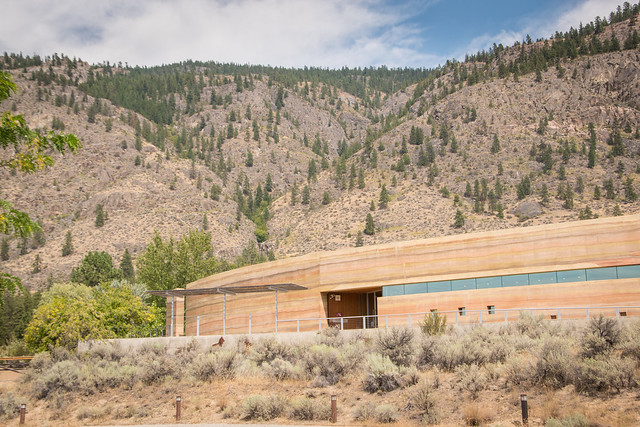
I love our coastal rainforests and I gained even more of an appreciation for them when I took my first “Talking Trees” with Candace Campo of Talaysay Tours. During those walks (in Vancouver and on the Sunshine Coast) I learned so much about our local ecology, how nature provides, how we can respect it, and how we are caretakers for future generations to enjoy these natural gifts.
In the desert, things look a little different: There are no lush ferns, mosses or arbutus, however nature still provides. Here are a few things I learned during our tour outside the Nk’Mip Desert Cultural Centre on the land of the Osoyoos Indian Band.
Indigenous Plant Use in the South Okanagan
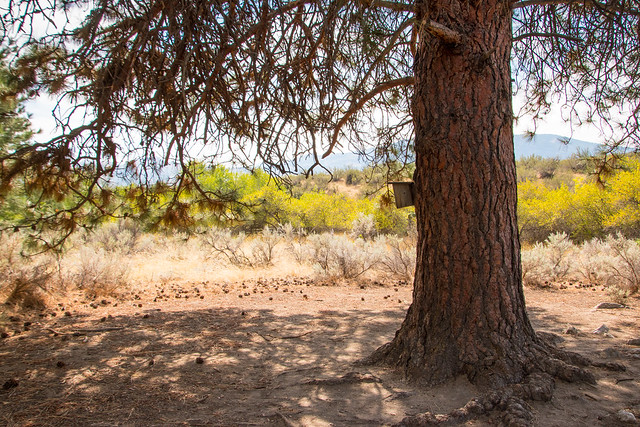
Ponderosa Pine: When you’re driving along Highway 3 from Vancouver, just past Manning Park the terrain changes as you enter the Similkameen Valley. One thing you’ll notice is the evergreens; the scaly orange and black bark of the Ponderosa Pine and its long spiny needles. Those needles, which grow to 12-24cm long, were intricately woven into baskets. The cones can be pieced apart for nuts and the sap or pitch was chewed as gum or applied to sores.
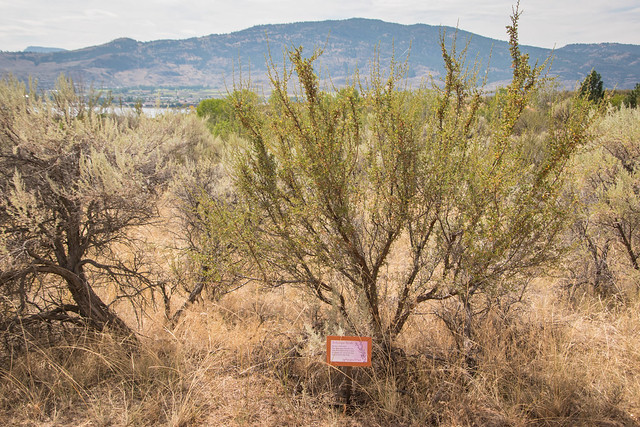
Antelope Brush: Ranked a “critically imperilled” in BC, this shrub that belongs to the rose family has bright yellow flowers in the spring. Its leaves and small branches are combustable so they were used as fire starters burning as easily as grease. It’s also an important source of food for foragers such as bighorn sheep, mule deer and white-tailed deer.

Saskatoon Berry: I’ve had Saskatoon Berry ice cream (next door at The Bear The Fish The Root and The Berry), and jam smothered on delicious bannock, but I had never seen the tree in its natural habitat. The fact that it looked like a tree was surprising since I imagined it grew like a blueberry. The fruit is used in soups, stews, meat dishes, pemmican and dried cakes. Saskatoon berry juice is used to cure stomach ailments, and is a mild laxative. Arrows and pipes can be made from its stems.
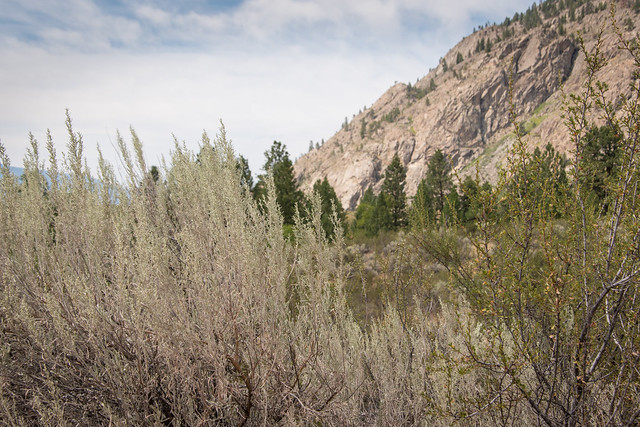
Sagebrush: You can smell it in the warm desert air. Sage leaves and branches were used to make a tea for colds, and burned to help air out a house. Some wove the bark into mats, bags and clothes.
Black Cottonwood: Our guide Jenna explained that this tree is like the cedar on the coast in terms of how many uses it has to people. The trunks could be made into canoes, and its fluffy seeds could be used for padding, and for medical or feminine hygiene purposes. The sticky buds could be used for ointment or glue.
The Syilx of the Okanagan Nation, live in eight communities in the interior of British Columbia and Washington. Over 400 band members live and work on the Osoyoos Indian Reserve which stretches from Oliver to Osoyoos.
Okanagan First Nations once travelled widely to fishing, gathering and hunting areas. Each year, the first harvests of roots, berries, fish and game were celebrated by ceremonies honouring the food chiefs who provided for the people. During the winter, people returned to permanent winter villages. The names of many of the settlements in the Okanagan Valley–Osoyoos, Keremeos, Penticton and Kelowna–come from aboriginal words for these settled areas and attest to the long history of the Syilx people on this land. Read more »
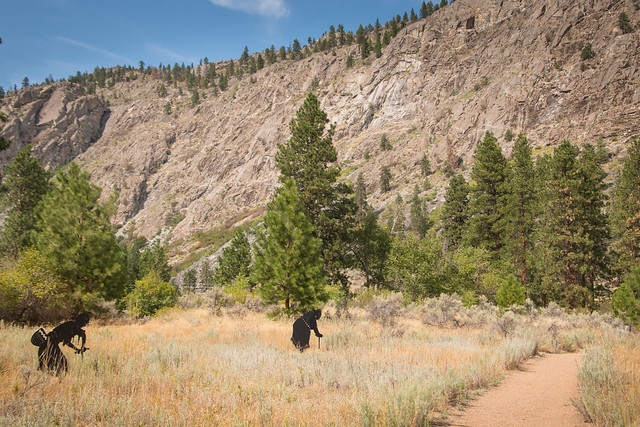
You can see all of these plants and more during one of the daily guided tours (9:30am and 10:00am) at the Nk’Mip Desert Cultural Centre.










